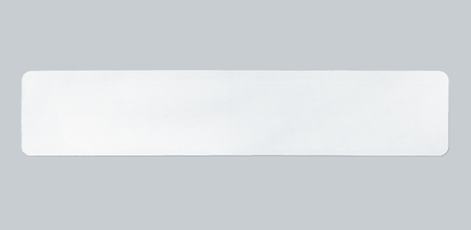TiLENE® Strip

Our titanised hernia meshes TiLENE® Strip are hydrophilic with excellent body compatibility providing better patient outcomes. TiLENE® Strip serves to prevent incisional hernias, e.g. during fascial closure following laparotomy. It can be applied using either the onlay or the sublay technique. The pore size is 1 mm.
Benefits
- Titanium’s body compatibility properties transferred to a hernia mesh1
- A better quality of life for patients2
- Easy handling and excellent visibility
- Imaging diagnostics are not affected
Technical Data
- Titanised type 1a polypropylene meshes
- Macroporous: pore size of 1 mm
- Lightweight: 35 g/m²
- Monofilament fabric
- Laser cut atraumatic edges
- Non-absorbable
- EO-sterilised (ethylene oxide), pyrogen-free
Knowledge
Titanisation of mesh implants
Titanium is one of the most biocompatible materials and the preferred alloy used in various surgical applications since 1946.3 In 2002, pfmmedical successfully developed the first procedure worldwide that permits the application of titanium to flexible and elastic primary materials, specifically polypropylene meshes.
TiLENE® Strip mesh implants are type 1a polypropylene meshes (macroporous, lightweight, and monofilamentous) which are hydrophilic due to titanisation. A hydrophilic mesh implant integrates better into surrounding tissue than a hydrophobic material.

Application Range
Preventive use.
Manufacturer
pfm medical titanium gmbh
Südwestpark 42
90449 Nürnberg, Germany
Ordering Information
| REF | Weight | Size | PU |
|---|---|---|---|
| 6000534 | 35 g/m² | 6 x 40 cm | 3 |
| 6000536 | 35 g/m² | 8 x 40 cm | 3 |
| 6000538 | 35 g/m² | 10 x 40 cm | 3 |
Services
Literature
1 CE-Zulassung des titanisierten Herniennetzes TiMESH: 2002
2 Horstmann R., Hellwig M., Classen C., Röttgermann S., Palmes D., Impact of polypropylene amount on functional outcome and quality of life after inguinal hernia repair by the TAPP procedure using pure, mixed, and titanium-coated
meshes. World J Surg., 2006. 30(9): p. 1742-1749.
3 Wintermantel, E., S.-W.H., Medizintechnik Life Science Engineering. 5 ed. 2009, Berlin Heidelberg: Springer-Verlag.